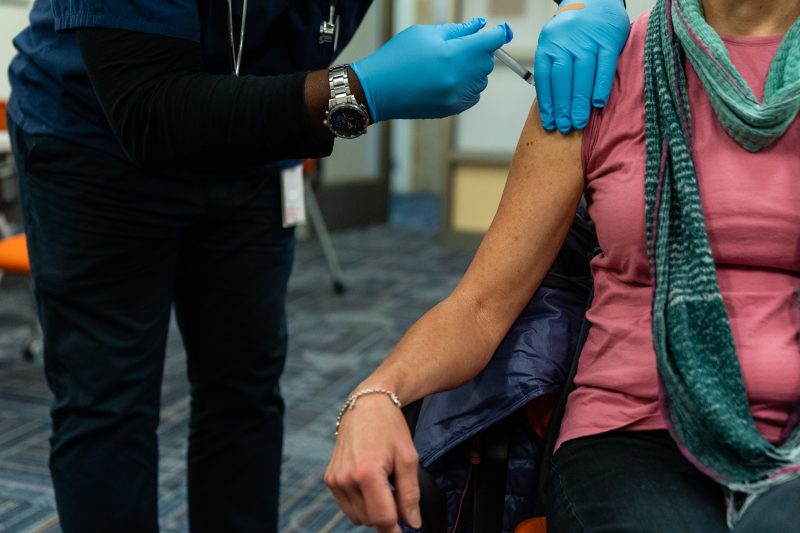
There’s a racial gap on covid vaccine — because of the partisan gap
At the end of the summer, the Centers for Disease Control and Prevention approved an updated version of vaccines targeting the coronavirus responsible for covid-19. But uptake has been slow; as of this writing, only 56.4 million Americans have gotten the new version of the vaccine.
Polling released Friday shows an interesting pattern in views of the updated vaccine. The survey by KFF found that about a fifth of respondents said they had already gotten vaccinated, just about in line with 56 million relative to the country’s adult population. But there was a noticeable gap by race: most Black and Hispanic Americans said they had gotten or would likely get the updated vaccine, while most White Americans said they wouldn’t.
You can see that below. More than a third of Americans over the age of 65 say they have already received the updated vaccine, which is probably why the percentage of White Americans who say they have gotten a dose is comparable to the percentages of Black and Hispanic Americans. (Older Americans are more likely to be White than are younger Americans.)
But if you go a level deeper, you see that the divide here isn’t really a racial one. Instead, it’s largely a political one.
KFF provided The Washington Post with data on views of the vaccines among Whites by party. The data already indicated that Democrats were far more likely to say they planned to get the new vaccine than Republicans, with three-quarters of the former group saying they had or planned to, and three-quarters of the latter saying they probably wouldn’t. Actually, more than half of Republicans said they definitely would not get the updated vaccine.
Republicans are overwhelmingly White. So when we break out White respondents by party, you see the effect: White Democrats are far more likely to say they will get the vaccine than Black or Hispanic Americans. The total for Whites is pulled in the other direction, though, by opposition from White Republicans.
In other words, views of the vaccine are — as they have been for a very long time now — largely polarized not by race but by party.
When the delta variant of the virus surged in the middle of 2021, we began to see the effects of this divide. Research showed that, after vaccines became broadly available, deaths from covid-19 in Ohio and Florida were disproportionately occurring among Republicans. Before the vaccines were available, there was no such divide.
We’ve also seen that opposition to vaccines on the right extends beyond the covid-19 inoculations. Last December, we looked at polling that showed a big drop in support for MMR (measles-mumps-rubella) vaccines among Republicans — a drop that was measured after the pandemic.
The good news here is that the number of deaths from covid-19 in recent months has been relatively low. CDC data tends to have a significant lag time, but, in mid-October, there were about 1,200 deaths a week from the disease. As recently as January, that figure was more than 3,800 deaths. There are other negative aspects of contracting the virus, certainly, including long covid, a condition in which those infected see their health impacted for months or years afterward. But the death toll has seemingly stabilized, albeit well above zero.
This is undoubtedly also part of the reason that vaccine uptake is slow: People aren’t as worried about covid as they used to be. This may be self-reinforcing, suggesting to vaccine skeptics that the vaccines weren’t necessary in the first place.
The lingering question, really, is what happens next time? What happens with other vaccines and illnesses? Do we start to see other illnesses bifurcated by party and, if so, what are the effects?
We remain near the beginning of a social experiment being conducted at a very large scale — an experiment with an awfully big potential downside.
